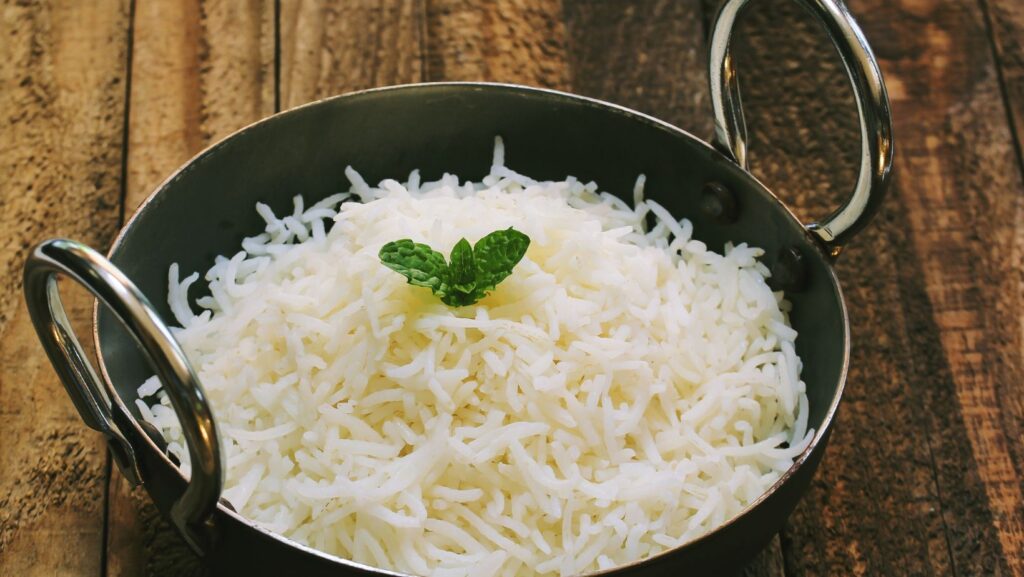
If you have diabetes, you might be wondering if you can still enjoy basmati rice, a staple in many cuisines. Basmati rice is a type of long-grain rice that has a fragrant aroma and a nutty flavor. But is basmati rice good for diabetics? How does it affect your blood sugar levels? And what are the best ways to cook and serve it?
Understanding Basmati Rice
Basmati rice is not only delicious, but also nutritious. It contains carbohydrates, which provide energy; fiber, which aids digestion; and protein, which builds and repairs tissues. It also has essential vitamins and minerals, such as thiamine, niacin, iron, zinc and magnesium. These nutrients support various functions of the body, such as metabolism, immunity, nerve health and blood formation.
Basmati rice is a good choice for diabetics because it has a low to medium glycemic index (GI), which means it does not cause a rapid spike in blood sugar levels after eating. The GI of basmati rice ranges from 50 to 58, depending on the variety and cooking method. This is lower than the GI of other types of rice, such as jasmine (68 to 80) or white (72 to 83). Basmati rice also has a higher amylose content than other rices, which makes it more resistant to digestion and absorption. This helps to regulate blood sugar levels and prevent diabetes complications.
The Diabetic Dilemma
Rice is a staple food for many cultures, but it is also high in carbohydrates, which can affect your blood sugar levels. How can you balance your love for rice with your diabetes management?
The key is to understand the glycemic index (GI) of different types of rice. The GI is a measure of how quickly a food raises your blood sugar after you eat it. Foods with a high GI cause a rapid spike in blood sugar, while foods with a low GI cause a more gradual rise. Basmati rice has a lower GI than most other types of rice, which means it has less impact on your blood sugar. However, this does not mean you can eat unlimited amounts of basmati rice. You still need to watch your portion size and the amount of carbohydrates you consume in a day.
Another factor to consider is the overall quality of your diet and lifestyle. Basmati rice can be part of a balanced and nutritious meal, especially if you pair it with lean protein, vegetables, and healthy fats. You should also avoid adding too much salt, sugar, or fat to your rice, as these can increase the calories and the GI of your meal. Additionally, you should exercise regularly, monitor your blood sugar levels, and follow your doctor’s advice on medication and insulin.
Is Basmati Rice Good for Diabetics?
Yes, basmati rice can be enjoyed by diabetics as well. Unlike some other varieties of rice, basmati rice has a low to medium glycemic index (GI), which means it does not cause a rapid spike in blood sugar levels after eating. This is because basmati rice contains more amylose, a type of starch that is harder to digest and releases glucose more slowly into the bloodstream. Basmati rice also has a high fiber content, which helps to regulate digestion and prevent constipation. Fiber also slows down the absorption of glucose from the food, which can help to keep blood sugar levels stable.

However, diabetics should still be mindful of the amount of basmati rice they consume, as it is still a source of carbohydrates that can affect blood sugar levels. It is recommended to measure the portion size of cooked rice and pair it with lean protein and vegetables for a balanced and nutritious meal. Basmati rice can be a healthy and tasty option for diabetics, as long as it is eaten in moderation and as part of a well-planned diet.
What Type of Rice and Grains are Good for Diabetics?
Basmati rice is not the only option for diabetics who want to enjoy a bowl of rice. There are many other types of rice and grains that are suitable for diabetics, and they have some advantages over basmati rice. Here are some of them:
- Whole grains: These include brown rice, wild rice, oats, buckwheat, millet, and more. Whole grains have the bran and germ intact, which means they have more fiber, vitamins, minerals, and phytochemicals than refined grains. Fiber helps slow down the digestion and absorption of carbohydrates, which can prevent blood sugar spikes and improve insulin sensitivity. Whole grains also have a lower glycemic index (GI) than refined grains, which means they cause less of an increase in blood sugar levels after eating.
- Quinoa: This is a pseudocereal that is gluten-free and high in protein. Quinoa has a low GI of 53, which is similar to basmati rice. Quinoa also contains all nine essential amino acids, making it a complete protein source. Quinoa is rich in antioxidants, magnesium, iron, and folate, which are beneficial for diabetics.
- Barley: This is a cereal grain that has a low GI of 28, which is much lower than basmati rice. Barley is high in soluble fiber, which can lower cholesterol levels and reduce the risk of heart disease. Barley also contains beta-glucans, which are polysaccharides that can modulate the immune system and lower inflammation.
Tips in Managing and Monitoring Blood Sugar
One of the most important aspects of managing diabetes is keeping your blood sugar levels within a healthy range. Here are some tips to help you do that:
- Exercise regularly. Physical activity can help lower your blood sugar levels and improve your insulin sensitivity. Aim for at least 150 minutes of moderate-intensity exercise per week, such as brisk walking, cycling, or swimming.
- Control your portions. Eating too much food, especially carbohydrates, can raise your blood sugar levels. Use a smaller plate, measure your servings, and avoid second helpings. You can also use the plate method to balance your meals: fill half of your plate with non-starchy vegetables, a quarter with lean protein, and a quarter with basmati rice or another whole grain.
- Eat a variety of foods. Basmati rice is a good choice for diabetics because it has a low glycemic index, which means it does not cause a rapid spike in blood sugar levels. However, you should not rely on basmati rice alone as your main source of carbohydrates. Include other foods that are rich in fiber, vitamins, minerals, and antioxidants, such as fruits, vegetables, nuts, seeds, and legumes.
- Monitor your blood sugar levels. Checking your blood sugar levels regularly can help you see how different foods affect your body and adjust your diet accordingly. You can use a glucometer, a device that measures the amount of glucose in your blood, or a continuous glucose monitor (CGM) like Omnipod, a device that tracks your glucose levels throughout the day and night. Follow the advice of your healthcare professional on how often and when to check your blood sugar levels.
- Consult with a healthcare professional. Diabetes is a complex condition that requires individualized care and guidance. A healthcare professional can help you set realistic goals, prescribe medications if needed, and provide support and education. You should see your doctor at least once a year for a comprehensive check-up and more often if you have any complications or concerns.
Conclusion
Basmati rice has a lower glycemic index than other types of rice, which means it causes a slower and smaller rise in blood sugar levels. It has some nutritional benefits, such as providing fiber, protein, and vitamins.
However, it is still a carbohydrate-rich food that can affect blood sugar levels, especially if consumed in large portions or without other foods that can balance it out. Therefore, basmati rice can be enjoyed by diabetics in moderation and as part of a balanced diet that includes lean protein, healthy fats, and plenty of vegetables.













